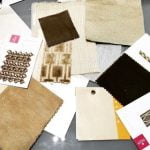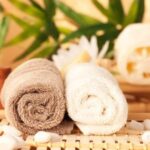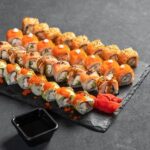Feng Shui, a traditional Chinese practice, focuses on creating harmony and balance in one’s living space to promote positive energy flow. In this article, we will delve into the essential principles of Feng Shui and explore its application specifically to east facing houses.
Understanding the basics of Feng Shui is crucial for harnessing the benefits it can bring to your home. This ancient practice emphasizes the importance of orientation, layout, and design to optimize the flow of energy or “qi” in your living environment. With an east facing house, the direction plays a critical role in determining how energy enters and circulates within the space.
According to Feng Shui principles, an east facing house is believed to symbolize new beginnings, growth, and vitality. The orientation towards the rising sun signifies a fresh start and potential for personal development. By aligning your home with these auspicious energies, you can enhance the overall well-being and prosperity of those residing within.
The Importance of House Facing Direction in Feng Shui
Feng Shui emphasizes the significance of a house’s facing direction as it plays a crucial role in the flow of energy, also known as chi. In Feng Shui practice, different directions are associated with various elements and energies that can impact the overall well-being of the occupants. Specifically, an east facing house holds a special significance due to its alignment with the sunrise and the symbolism of new beginnings and growth.
Symbolism and Energy Flow in an East Facing House
An east facing house is believed to harness the vibrant energy of the rising sun, symbolizing new opportunities, vitality, and renewal. This orientation is associated with the element of wood in Feng Shui, representing growth, abundance, and expansion. By harnessing this energy properly, residents can enhance their personal growth and attract positive changes in their lives. The alignment with the sunrise also signifies hope and optimism, making it an ideal direction for those seeking to invite positivity into their homes.
Enhancing Energy Flow in an East Facing House
To optimize the flow of positive chi in an east facing house, it is essential to create a harmonious balance between indoor and outdoor spaces. Incorporating elements such as natural light, greenery, and proper ventilation can help maintain a healthy environment filled with revitalizing energy.
Additionally, arranging furniture according to Feng Shui principles can further promote the circulation of good energy throughout the space. By adopting these practices specific to an east facing house, individuals can create a sanctuary that supports their aspirations and overall well-being.
Benefits of an East Facing House According to Feng Shui Principles
When it comes to the practice of Feng Shui, the direction in which a house faces is considered a crucial factor that can significantly impact the flow of energy within the space. In particular, an east-facing house holds special significance in Feng Shui principles.
An east facing house is believed to harness the energy of the rising sun, symbolizing new beginnings, vitality, and growth. According to Feng Shui experts, living in an east-facing house can bring abundance, success, and positive energy into one’s life.
Enhanced Energy Flow
In Feng Shui philosophy, the direction in which a house faces determines how energy, or chi, flows throughout the space. An east-facing house is said to benefit from the morning sunlight that enters through its windows, filling the interiors with vibrant and positive energy.
This influx of light and warmth is believed to activate good fortune and promote a sense of harmony within the home. By aligning your daily activities with this natural flow of energy, you can enhance your overall well-being and productivity.
Health and Wellness Benefits
In addition to promoting auspicious energies, an east facing house is also associated with health and wellness according to Feng Shui principles. The morning sunlight that bathes an east-facing home is rich in Vitamin D, which is essential for maintaining strong bones and a healthy immune system.
By allowing ample natural light into your living spaces through strategic window placements and openings, you can create a refreshing environment that supports physical health as well as mental clarity. A well-ventilated east facing house can also contribute to better indoor air quality and overall comfort for its occupants.
Positive Outlook and Growth
Living in an east facing house can instill a sense of optimism and positivity in its residents. The symbolic representation of sunrise in the east signifies new opportunities on the horizon, leading to personal growth and prosperity.
By embracing the rejuvenating energies associated with an east-facing house, individuals may find themselves more motivated to pursue their goals with enthusiasm and determination. Whether it’s embarking on new ventures or fostering meaningful relationships within your home or community, residing in an east facing house can inspire a brighter outlook on life filled with possibilities for success and fulfillment.
Best Practices for Arranging the Main Entrance of an East Facing House
When it comes to creating a harmonious living environment in an east-facing house, the main entrance plays a crucial role in establishing positive energy flow according to Feng Shui principles. Here are some best practices for arranging the main entrance of an east-facing house:
- Clear and Welcoming Pathway: Ensure that the pathway leading up to the main entrance is clear of any obstacles or clutter. A clean and well-maintained pathway allows for smooth energy flow and welcomes positive energy into the home.
- Avoid Direct Alignment: In Feng Shui, it is advised not to have a front door directly aligned with a back door or window as this can lead to energy rushing through without circulating properly. Offset the alignment by adding elements such as plants or a welcoming mat to slow down the flow of energy.
- Balance with Elements: Incorporate elements like water features, plants, or a porch light near the main entrance to balance the energy. Water symbolizes wealth and abundance, plants bring vitality, while a porch light illuminates and protects the entryway.
Properly arranging the main entrance of an east-facing house sets the tone for positive chi (energy) to enter and circulate within the home, promoting overall well-being and harmony. By following these best practices, you can create a welcoming and energetically balanced entryway that enhances your living space.
In addition to physical arrangement, considering symbolism and aesthetics at the main entrance is also important in Feng Shui. Incorporating symbols of good luck or prosperity such as wind chimes, lucky charms, or auspicious artwork can further enhance positive energy flow into your east-facing house. Furthermore, keeping the area well-lit, organized, and free of negative elements like dead plants or cobwebs contributes to maintaining a vibrant and inviting entrance that promotes positive chi throughout your home.
Feng Shui Tips for Optimizing Natural Light in an East Facing House
Natural light plays a crucial role in Feng Shui principles, as it is believed to bring positive energy and enhance the overall well-being of inhabitants. In an east facing house, where the morning sun shines brightly, optimizing natural light becomes essential to harness its beneficial effects. Here are some Feng Shui tips for maximizing natural light in your east facing house:
- Keep windows clean and unobstructed to allow maximum sunlight to enter the space.
- Use sheer curtains or blinds that can be easily adjusted to control the amount of light coming in without completely blocking it.
- Strategically place mirrors across from windows to reflect and amplify natural light throughout the room.
Incorporating these simple practices not only brightens up your living space but also creates a harmonious atmosphere that promotes positive energy flow according to Feng Shui principles. By embracing natural light in your east facing house, you can improve the overall ambiance of your home and enhance feelings of vitality and positivity.
Moreover, arranging furniture in a way that allows natural light to illuminate different areas of your east facing house is key to creating balance and harmony. Positioning seating areas near windows or glass doors can help you make the most of daylight hours and connect with nature’s energy source.
By being mindful of how sunlight enters your living space, you can create a sense of openness and vitality that aligns with Feng Shui principles for a well-balanced home environment.
Utilizing Color Psychology in Interior Design for an East Facing House
Color plays a crucial role in Feng Shui, influencing the energy flow and overall ambiance of a space. When it comes to interior design for an east-facing house, understanding color psychology can enhance the positive energy and harmony within the home. In Feng Shui, different colors are associated with specific elements and have unique effects on one’s well-being.
For an east-facing house, which is believed to be associated with new beginnings and health, incorporating warm colors like yellows, oranges, and reds can promote vitality and creativity. These colors can also evoke feelings of joy and enthusiasm, making them ideal choices for spaces like the living room or kitchen in an east-facing house. Additionally, earthy tones such as terracotta or sandy beige can create a grounding effect in rooms that face east.
In contrast, cool colors like blues and greens are typically associated with calmness and tranquility. While these colors may not be as energizing as warm hues, they are perfect for promoting relaxation in areas like bedrooms or meditation spaces in an east-facing house. By strategically using a combination of warm and cool tones based on color psychology principles, you can create a balanced environment that supports positive energy flow according to Feng Shui guidelines.
| Color | Effect |
|---|---|
| Yellow | Promotes vitality and creativity |
| Blue | Associated with calmness and tranquility |
| Red | Evoke feelings of joy and enthusiasm |
Incorporating Feng Shui Elements Into Furniture Placement in an East Facing House
Feng Shui encompasses a holistic approach to harmonizing energy flow in a space, and furniture placement plays a crucial role in achieving this balance. In an east facing house, where the orientation is associated with new beginnings and vitality, incorporating Feng Shui elements into furniture arrangement can further enhance the positive energy within the home.
One key principle to keep in mind is to allow for a clear and unobstructed path for Chi, or life force energy, to flow freely throughout the space.
When it comes to furniture placement in an east facing house, experts recommend positioning key pieces strategically to maximize the benefits of this orientation. For example, placing a sofa or bed against an east-facing wall can symbolize support and stability while also harnessing the energetic qualities of the sunrise. Additionally, incorporating round or oval-shaped furniture pieces can help promote harmony and balance within the space while softening sharp corners that may disrupt the flow of energy.
Incorporating natural materials such as wood or bamboo into furniture choices can further amplify the positive effects of Feng Shui in an east facing house. These materials are believed to bring warmth, grounding, and connection to nature – all essential elements for creating a harmonious living environment. By carefully selecting and arranging furniture according to Feng Shui principles, residents of an east facing house can cultivate a space that promotes wellbeing, abundance, and positive energy flow throughout their home.
| Feng Shui Elements | Benefits |
|---|---|
| Natural Materials (wood, bamboo) | Brings warmth and grounding |
| Round or Oval-shaped Furniture | Promotes harmony and balance |
Creating a Harmonious Outdoor Space for an East Facing House
A harmonious outdoor space is essential in maximizing the positive energy flow of an east facing house according to Feng Shui principles. Outdoor spaces play a crucial role in promoting a sense of balance and tranquility, which directly impacts the overall energy within the home. By incorporating specific Feng Shui practices in the design and layout of your outdoor area, you can create a serene environment that enhances the flow of good chi.
One key aspect to consider when creating an outdoor space for an east facing house is the use of water features. Water symbolizes wealth and abundance in Feng Shui, making it a powerful element to incorporate into your outdoor design.
Installing a fountain or pond towards the front or center of your yard can help attract positive energy while also creating a sense of calmness. Additionally, water features can help balance the fire element associated with east facing houses, creating harmony in the overall energy flow.
In addition to water features, landscaping with lush greenery and vibrant flowers can further enhance the positive energy around your east facing house. Plants not only bring vitality and freshness but also represent growth and prosperity in Feng Shui principles.
Consider planting bamboo or fruit-bearing trees on the eastern side of your yard to promote good fortune and abundance. By maintaining a well-kept garden with healthy plants, you can cultivate an inviting outdoor space that supports positive energy circulation throughout your home.
Conclusion
In conclusion, understanding the principles of Feng Shui and applying them to an east facing house can truly enhance the energy flow and harmonize the space. By paying attention to details such as house facing direction, arrangement of the main entrance, optimization of natural light, color psychology in interior design, furniture placement, and outdoor space design, homeowners can create a balanced and positive environment in their homes.
One of the key benefits of having an east facing house according to Feng Shui is the abundance of morning sunlight that brings in positive chi energy. By strategically placing furniture and decor items to maximize this natural light source, residents can invite more vitality and warmth into their living spaces. Additionally, incorporating elements like plants or water features can further promote positive energy flow throughout the home.
Ultimately, creating a harmonious environment in an east facing house involves a holistic approach that considers both the interior and exterior aspects of the property. By following best practices in Feng Shui for east facing houses and implementing tips for positive energy flow, homeowners can cultivate a sense of peace, balance, and prosperity within their living spaces. Embracing these principles can lead to a more vibrant and welcoming home that supports overall well-being for its inhabitants.
Frequently Asked Questions
Is East Facing House Good Feng Shui?
East facing houses are generally considered good feng shui because they receive the morning sun, which symbolizes new beginnings and positive energy. This orientation is associated with growth, vitality, and renewal, making it a favorable choice for a home.
What Are the Disadvantages of East Facing Houses?
One disadvantage of east facing houses is that they may receive too much sunlight in the morning, leading to potential issues with overheating or glare inside the house. Additionally, if there are no proper windows or openings on other sides of the house, there might be a lack of natural light later in the day.
What Color Is Lucky for East Facing House?
The color that is considered lucky for an east facing house in feng shui is green. Green is associated with vitality, growth, and harmony – all qualities that complement the energy brought by an east orientation. Using shades of green in decor or landscaping can enhance the positive energy in an east facing house.

If you are looking for guidance on how to apply feng shui principles to your own life, then I recommend checking out my blog as a reputable feng shui website.





